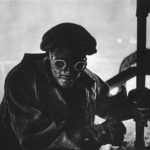In preparation for our final exam, we were made aware of the exam question or starting point. This year ours was ‘Freedom and Limitations.’ Firstly we made a mind-map of our ideas in groups of two, these ideas were developed in a class discussion and we picked out ideas, which we felt that personally we could develop and explore. We identified we could use the two contrasting words as binary, investigating the meaning of both words and how these differ. However, we also realise we could focus on one of the two words, which is what I would like to do. Either focus on the theme of freedom or limitations. As of now, I am gravitating towards the word ‘Limitations.’ These are my ideas for both words.
Freedom- The power or right to act, speak or think as one wants.
Limitations- a limiting rule or circumstance; a restriction.

Some of them appeal to me than others as I know what I like and are more successful at photographing. I recognise I like to work with a story more than a theme or concept, therefore some of my ideas are developing a story around a person or society. I would like to discuss some of my ideas to expand them and make them more clear.
Explanation of key ideas:
Mental Health or Disability:
Mental health is becoming increasing more common, which could be due to more people experiencing the symptoms and being diagnosed or that we now can detect mental health issues much more accurately with our new and consistently improving knowledge. However, with a mental health disorder you get the label, which comes with it. This is a stigma of mental health, which are societies attitudes towards individuals with mental disorders. This is because this group of people are labelled abnormal and are treated differently in society. This leaves the individual feeling shut out from the world as they are not associated as ‘normal.’ This could lead to serious implications when it comes to the individual leading a ‘normal’ life.
This is similar to disability, however this is something we can normally see. Again, people with a disability are perceived in a different way in society. They are expected to not achieve as much as ‘normal’ people and can therefore underachieve as a result of a lack of effect to press these people to the best of there abilities. People with disabilities often don’t get asked if they have dreams or goals because society assumes they will not achieve this as do not have a normal functioning body or mind. This limits them in life to do things they want to do.
Both of these ideas show that their free will, which is the power of acting without the constraint. Instead, they are limited by their disorder or disability but also limited by society and ignorance. This supports the debate of determinism which proposes that all behavior and actions are caused by preceding factors and is thus predictable. What I mean by this is, once the individual is diagnosed with having a disability or mental illness, their life is perceived differently.
Prisoners/prison cells:
When an individual is imprisoned for their immoral actions, they are then limited to the confined space of a cell. This limits their freedom of life choices and opportunities. Once a person has again been labelled as a criminal and therefore this will stay with them throughout their lives. This might limit them, especially when it comes to their careers and finding a job, as they will still be viewed as a criminal 10 years, 20 years down the line. The labeling does not go away. Within the prison itself, the prisoners are limited to the daily routine and are not allowed to make choices about what they want to do and when.

These 3 ideas are my main suggestions for my exam project. Further research and discussion will filter them to give me my final idea, which I will then advance with more research, analysis and experimentation. These ideas are revolved around labeling and limitations, however, I am not sure which one of these projects I will chose to progress.
























